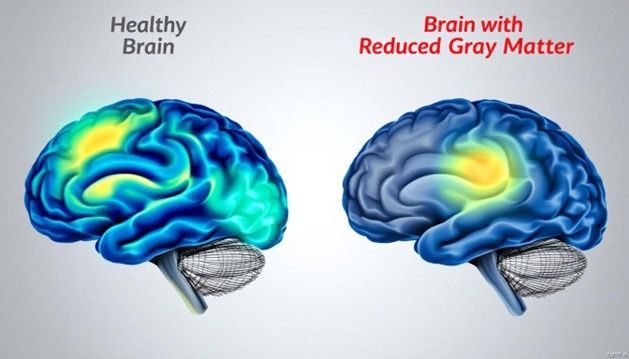11 Scientifically-Proven Ways to Lower Cortisol and Manage Stress for Better Health
Cortisol, often dubbed the "stress hormone," plays a crucial role in our body's response to stress. While it helps us manage acute stress, chronic elevation can have detrimental effects on health. Elevated cortisol levels have been linked to conditions such as cardiovascular disease, autoimmune disorders, and mental health issues like anxiety and depression. Below are eleven scientifically-backed strategies to manage cortisol effectively, with actionable steps to incorporate into your daily routine.
1. Focus on Healthier Foods
Maintaining balanced blood sugar is one of the key factors in controlling cortisol levels.
Why it works: Cortisol is closely tied to the body’s response to blood sugar fluctuations. Eating processed foods that cause rapid spikes and drops in blood sugar can lead to cortisol surges. Instead, stabilizing blood sugar through whole foods helps lower cortisol production.
Actionable Tips:
- Choose Whole Foods: Incorporate more whole grains, vegetables, healthy fats, and lean proteins. Foods like avocados, leafy greens, wild salmon, and nuts are excellent choices that support overall health and help maintain balanced cortisol levels.
- Reduce High-Glycemic Foods: Avoid sugary drinks, pastries, and refined carbs, which cause rapid blood sugar spikes and promote cortisol production.
- Eat Regular Meals: Don't skip meals, and aim for smaller, balanced meals throughout the day to avoid sudden drops in blood sugar, which can trigger cortisol production.
- Add Adaptogenic Herbs: Herbs like ashwagandha, rhodiola, and holy basil have been shown to help manage cortisol levels, particularly during times of high stress.
Example: A 2019 study found that consuming
low-GI foods, such as oats and legumes, helped reduce cortisol levels compared to a high-GI diet like processed snack foods. Incorporating these into meals is a simple but effective way to control stress.
2. Get Moving: Exercise for Cortisol Balance
Physical activity is one of the best ways to lower cortisol levels and improve stress response.
Why it works: Exercise promotes the release of endorphins, which counteract the stress response and reduces cortisol. It also improves insulin sensitivity, helping regulate blood sugar and cortisol in the long term.
Actionable Tips:
- Find Enjoyable Activities: You don’t need to run marathons. Try yoga, dancing, walking, or light stretching if high-intensity exercise is not for you. The key is consistency.
- Incorporate Movement Throughout Your Day: For those with desk jobs, take a break every hour to walk around for 5-10 minutes. This not only helps reduce cortisol but also keeps your circulation healthy.
- Try Strength Training: Weight training has been shown to help improve cortisol regulation over time, particularly when combined with adequate rest.
Example: A study found that individuals who ran on a treadmill for 30 minutes before taking a stress test showed a significant reduction in cortisol levels compared to those who didn’t exercise. This demonstrates the importance of exercise not only for physical health but also for managing stress.
3. Write It Down: The Power of Journaling
Writing can be a powerful tool for lowering cortisol levels and improving mental clarity.
Why it works: Writing, especially expressive writing about personal experiences, helps process emotions and can reduce the intensity of the stress response. It acts as a “release valve” for pent-up stress and emotions.
Actionable Tips:
- Start with 10 Minutes: Dedicate 10 minutes daily to journaling about your thoughts and feelings. This practice helps you reflect on your stressors and can help you gain a new perspective.
- Use Prompts: If you're not sure where to start, prompts like “What’s on my mind today?” or “How did I feel during that stressful moment?” can guide you.
- Focus on Gratitude: Adding a section for gratitude can significantly shift your mindset and reduce stress. Write down three things you are grateful for each day.
Example: A 2018 study found that participants who wrote about their stressful experiences experienced a significant reduction in cortisol and showed improved emotional regulation. Simple journaling could be the mental reset you need during stressful periods.
4. Try Meditating: Mindfulness to Lower Cortisol
Meditation is a proven method for reducing cortisol and improving stress resilience.
Why it works: Mindfulness meditation has been shown to lower cortisol by enhancing the body’s ability to remain calm under stress. It also helps with emotional regulation, which contributes to a more balanced response to stress.
Actionable Tips:
- Start Small: Begin with just 5-10 minutes of meditation each day, gradually increasing the duration as you get more comfortable.
- Try Guided Meditation Apps: Apps like Headspace, Calm, or Insight Timer offer guided sessions that teach mindfulness and relaxation techniques.
- Focus on Breathwork: A simple but effective technique involves focusing on your breath and slowly breathing in for a count of four, holding for four, and exhaling for four.
Example: A 2019 study found that mindfulness meditation significantly reduced cortisol levels in participants who practiced regularly. The key is consistency — with regular practice, you can teach your body to react less dramatically to stress.
5. Tap Into Your Community: Social Connection
Strong social ties are essential for managing stress and reducing cortisol.
Why it works: Human connection promotes the release of oxytocin, which can counteract cortisol’s negative effects. Feeling supported by others helps lower stress and mitigate the physical impacts of cortisol.
Actionable Tips:
- Spend Time with Loved Ones: Make time to connect with family, friends, or colleagues, whether through a phone call or in person.
- Join Support Groups: Online or in-person support groups provide a sense of belonging and understanding, which can help reduce cortisol.
- Be Present in Social Situations: Sometimes, it’s not about the quantity of time spent with others but the quality. Being present and truly connecting with others is more beneficial than simply being around people.
Example: Research from 1995 showed that individuals who had a supportive partner during stressful public speaking tasks had lower cortisol levels than those who did not have support. This illustrates the power of social bonds.
6. Get Some Sleep: Restorative Sleep for Cortisol Regulation
Sleep is one of the most powerful ways to keep cortisol levels balanced.
Why it works: During sleep, the body can repair and reset hormonal levels. Lack of sleep disrupts cortisol’s natural rhythm, leading to higher levels upon waking and throughout the day.
Actionable Tips:
- Prioritize Sleep Hygiene: Stick to a consistent sleep schedule, limit caffeine intake, and create a restful environment (dark, cool, and quiet).
- Avoid Technology Before Bed: Blue light from screens interferes with melatonin production, making it harder to fall asleep and increasing cortisol.
- Wind Down 30 Minutes Before Bed: Engage in relaxing activities like reading, listening to soothing music, or practicing deep breathing.
Example: A study published in Health Psychology showed that people who slept less than 6 hours experienced higher cortisol levels the next day. By simply improving sleep quality and quantity, you can reduce stress and lower cortisol.
7. Enjoy Art or Create Your Own
Engaging with art — whether by viewing it or creating it — has been shown to lower cortisol levels and promote relaxation.
Why it works: Creative activities allow your mind to focus on something other than stress, helping to shift your brain into a more relaxed state. It also promotes the release of dopamine, a feel-good neurotransmitter.
Actionable Tips:
- Try Art Therapy: You don’t need to be an artist to benefit from making art. Try drawing, painting, or even simple activities like coloring or sculpting with clay.
- Listen to Music: Music, especially calming tunes, or your favorite songs, can have an immediate effect on reducing stress and lowering cortisol.
- Engage in Crafting: Activities like knitting, sewing, or DIY projects can also be therapeutic.
Example: A study from Art Therapy journal found that participants who created art experienced significant reductions in cortisol, which indicates that engaging in creative activities can provide a fast-acting solution to stress.
8. Take a Break: Pause and Reset
Taking short breaks throughout your day can significantly reduce cortisol levels.
Why it works: When you're continuously working or engaged in a stressful activity, cortisol levels can remain elevated. Short breaks help reduce mental fatigue and stress, allowing cortisol levels to decrease.
Actionable Tips:
- The 10-Minute Break: Every hour, step away from your desk or task and take a quick walk or stretch. Even a brief walk around the office or stepping outside for a few minutes can lower cortisol.
- Practice the "Two-Minute Reset": If you're feeling overwhelmed, take a two-minute break to close your eyes and focus on breathing, helping to clear your mind.
Example: Research shows that even short breaks in the middle of a stressful task can lower cortisol and improve focus, leading to increased productivity and a calmer mind.
9. Laugh More: Humor as a Stress Buster
Laughter is a natural stress reliever and can immediately reduce cortisol.
Why it works: Laughter stimulates the production of endorphins, the body’s natural feel-good chemicals, while reducing cortisol levels. It also helps in creating a more positive outlook on life.
Actionable Tips:
- Watch Comedies or Stand-Up Shows: Dedicate some time to watch something funny. Even short bursts of laughter can have a lasting impact on stress levels.
- Surround Yourself with Fun People: Spend time with friends or colleagues who make you laugh and lighten your mood.
Example: A study published in Psychosomatic Medicine found that laughing during a stressful task led to significantly lower cortisol levels, showing that humor can be an easy, enjoyable way to combat stress.
10. Practice Deep Breathing
Deep breathing techniques can help lower cortisol levels instantly.
Why it works: Deep breathing activates the parasympathetic nervous system, which helps counteract the body’s stress response and reduces cortisol. It also slows the heart rate and improves oxygen flow to the brain, promoting a sense of calm.
Actionable Tips:
- 4-7-8 Breathing: Inhale for 4 seconds, hold your breath for 7 seconds, and exhale for 8 seconds. Repeat this pattern 3-4 times.
- Alternate Nostril Breathing: This technique involves breathing through one nostril while closing the other, helping to balance the body’s energy and reduce cortisol.
Example: A study showed that practicing deep breathing significantly reduced cortisol levels after just 5 minutes of focused breathing, indicating how quickly the body can respond to this relaxation technique.
11. Spend Time in Nature: Green Spaces for Stress Relief
Nature exposure has a calming effect on cortisol levels.
Why it works: Being in natural environments lowers cortisol and reduces feelings of stress and anxiety. Nature exposure has also been shown to improve mood and cognitive function.
Actionable Tips:
- Take Walks in Green Spaces: If possible, walk in parks or natural areas like forests or lakes. Simply being surrounded by nature can have significant stress-reducing effects.
- Gardening: Engaging in gardening or simply spending time in your backyard can be a peaceful way to lower cortisol levels.
Example: A 2019 study found that spending 20 minutes in a natural setting significantly lowered cortisol levels compared to those who spent the same time in urban settings.
Final Takeaway
Lowering cortisol is not about a single, dramatic change. It's about building a consistent set of habits that together improve your body’s ability to manage stress. By incorporating some or all these scientifically backed strategies into your daily life, you can maintain healthier cortisol levels and improve your overall well-being.











